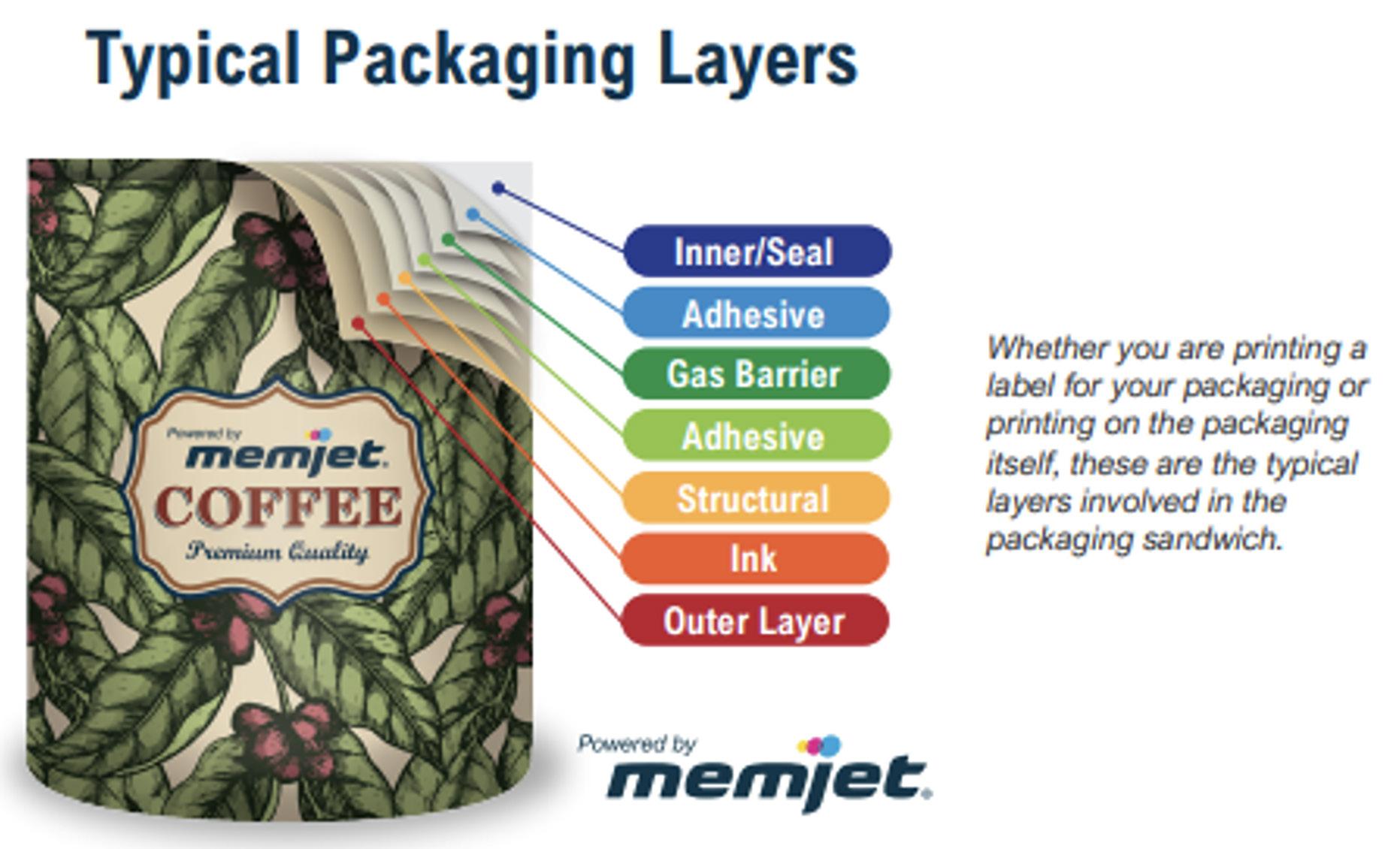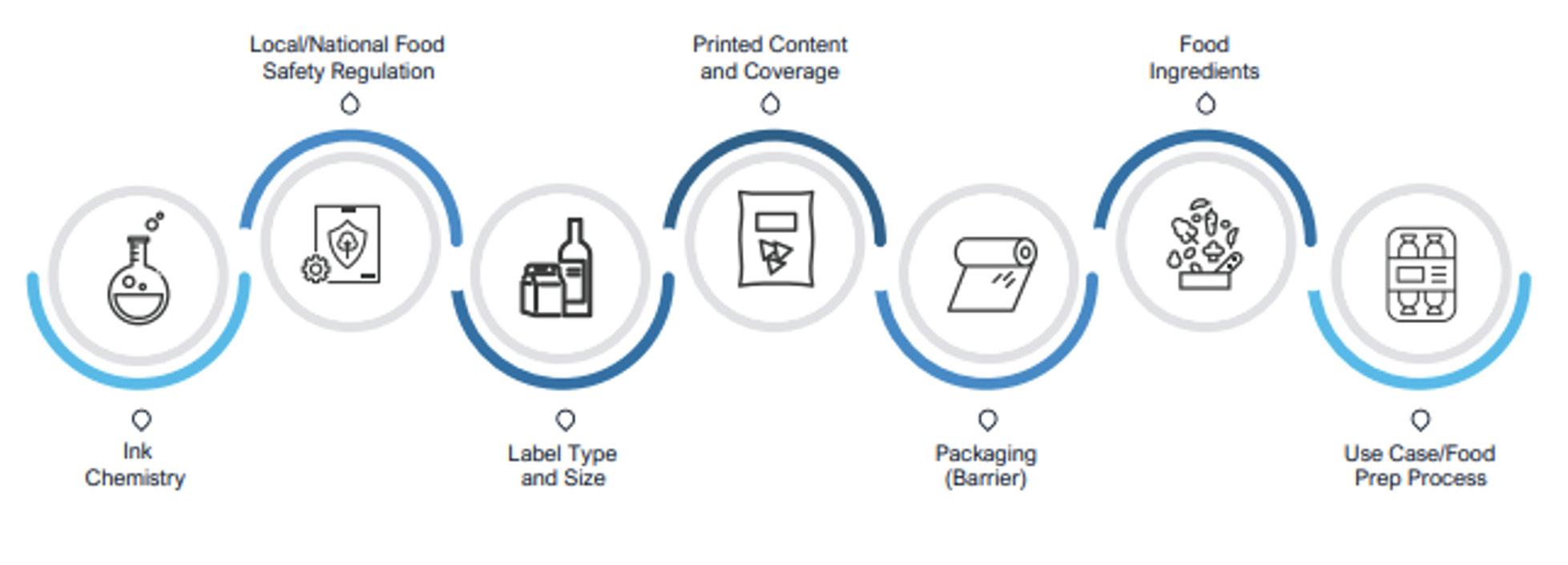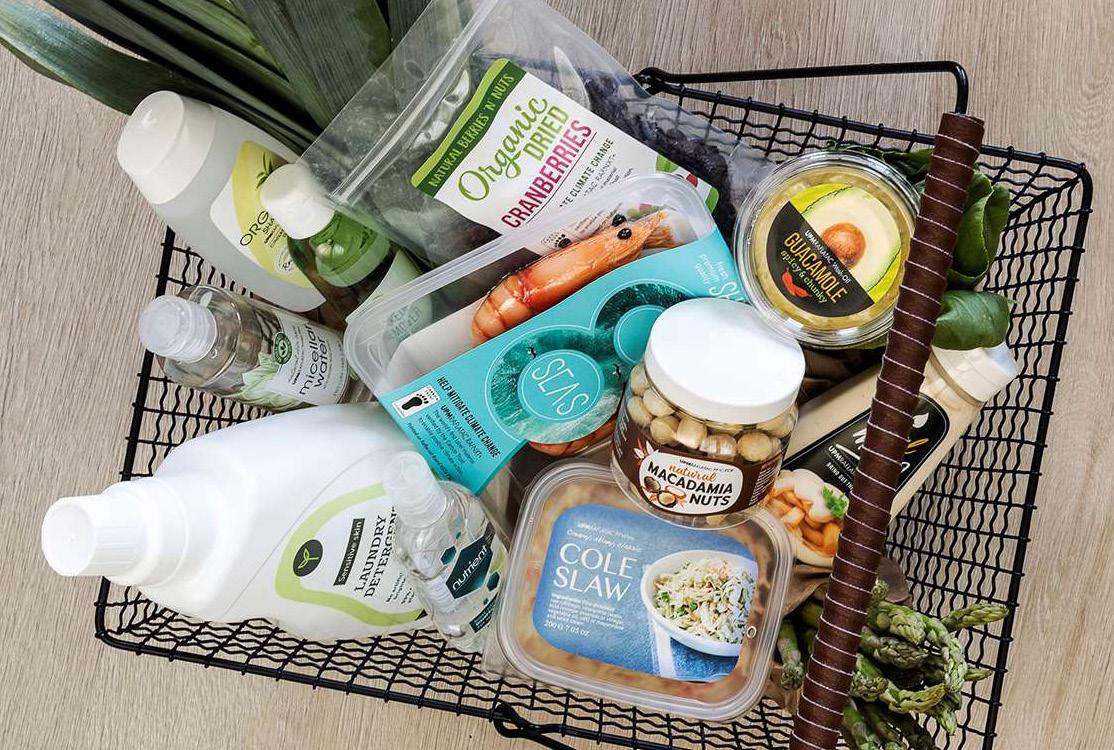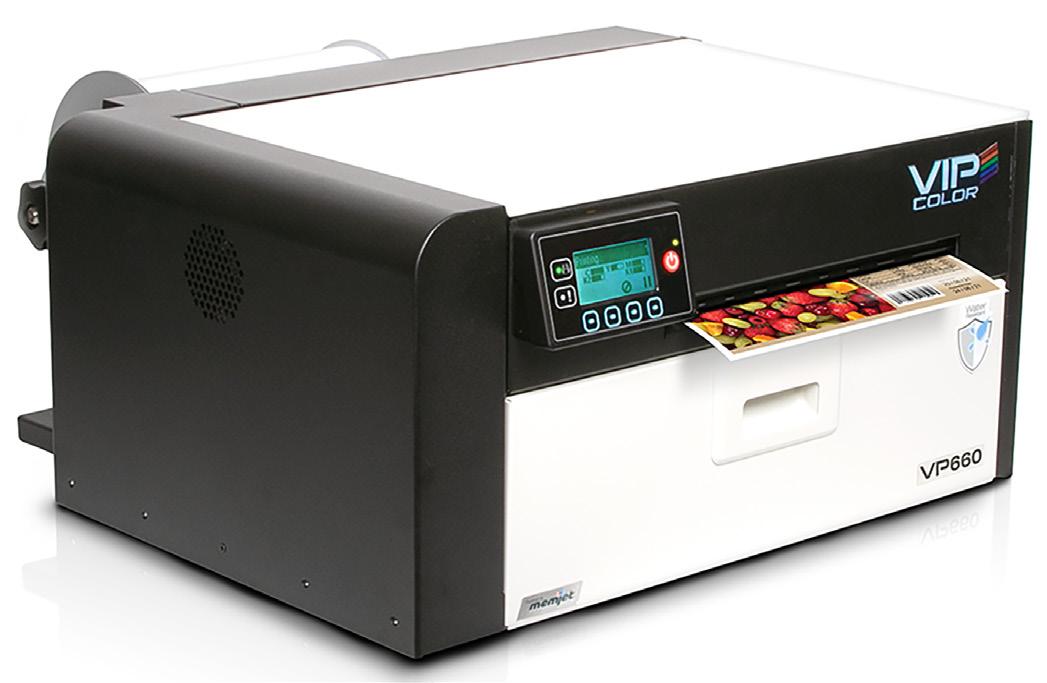
8 minute read
Creating Safe, Sustainable Food Packaging with the Right Ink
As demand for packaging continues to grow and strengthen, partly due to the pandemic, digital printing is uniquely positioned to produce the customized, sustainable, recyclable packaging needed to meet the demand of brands and consumers.
When it comes to food packaging, choosing the right ink technology plays a crucial role in the overall safety and quality of your package and its contents.
Creating Safe Food Labels and Packaging
Most labels and packages produced today are for food and beverage products. Anyone working — or expanding — in this growing market must understand how each component used in the packaging impacts the food inside. Each step in the supply chain should ensure their own regulatory responsibilities are met. In doing so, the company putting the product on the market can ultimately prove that the complete food package is compliant with all applicable regulations and safe for its intended end-use.
Failure to meet such regulations can lead to product recalls, sickness, or worse.
Whether you are a seasoned professional in the field of packaging and label production, or just beginning, it is critical to have an in-depth understanding of the principles of Food Contact Material (FCM) regulations and compliance. FCM compliance is about more than individual substances (or components) within each layer of a packaging article; it’s about ensuring that ALL the layers together — commonly known as the packaging “sandwich” — covers, protects, and preserves the food, and is holistically in compliance. While these jurisdictions may maintain regulations on the substances used within FCMs, such as paper, adhesives, and plastics, they are not in the business of certifying or approving individual layers or a complete food contact article (FCA), although you can submit them for review. While ink is not meant

The primary purpose of food packaging is to protect its contents from contamination or taint from the time it is put into the package until a consumer empties the package. A common method of contamination comes from the migration of substances from the packaging into the food.
This migration can happen from any material layer within the packaging, including the substrate, label, adhesive, or ink. The United States Food and Drug Administration (FDA) and European Food Safety Authority (EFSA) both regulate and evaluate the safety of most substances used in FCMs. Remember each layer in the packaging article constitutes its own FCM. to come into contact with food, there is no FDA or EU certification or even a harmonized regulation specific to ink.
Compositional Review and Migration Understanding how each layer in the packaging sandwich supports the overall compliance of the entire package is crucial. These are some of the critical areas within the packaging sandwich to review:
Compositional Compliance The composition or individual substances in each layer should first be assessed according to their corresponding material regulations in the jurisdiction(s) of interest. This may include maximum use limits or other specifications like food or temperature
Creating Safe, Sustainable Food Packaging

restrictions, extractive limitations, and specific migration limits.
Barrier/Structural
A functional barrier is any material or combination of materials that prevent the migration of components from any layer beyond the barrier layer into the food. Thicker packaging materials generally perform better as barriers but can be impacted by multiple factors and should be tested. Properly tested inkjet media, with its fast dry time, can enhance water resistance properties, protect the food and improve the quality of the label and/or package.
Inks
Inks often get a greater amount of attention because they are a visible part of a packaging sandwich. Ink contributes to the communication of a brand’s value — attracting customers to the product and letting them know what’s inside. With the focus on branding, the critical role that ink plays in creating safe food packaging is often overlooked. Ink migration is the transfer of ink components from or through a label or packaging. Here are two potential ways that migration can happen:
1. Penetration Migration is the migration of a substance from the printed side through the substrate onto the food.
2. Contact Migration or Set-off Migration can occur when a substance from the printed side migrates to the non-printed surface during manufacture or storage of the printed item in a stack or roll. One way to help limit ink set-off risk is to implement proper handling and drying methods.
Some companies use claims of “low migration inks” without assessing both the components and migration.
While a company can formulate their ink with higher molecular weight components that tend to migrate less than lower molecular weight components, this does not mean there is zero risk of migration and contamination of the food within packaging. It still needs to be proven with substantive data.

Outer Layer — Lamination and Varnishes
Outer lamination and varnishes (or overcoats) play a unique role in food labels and packaging. While they do not protect against potential ink migration through the backside of a label, they can help limit set-off, and protect what’s printed on the label.
Complete Package Safety
After reviewing and evaluating any individual material regulation requirements, the complete package must then be assessed as a whole, including good manufacturing processes, organoleptic properties, and migration limits.
A best practice for migration testing is to consider the worst-case conditions, including food type and temperature while transported, stored, processed, and consumed. For example, fatty and acidic foods may induce a higher migration of some chemicals than dry foods. Foods stored in the refrigerator/ freezer and/or used in the microwave will experience greater condensation or evaporation and therefore may require more substantial media, barrier and/or overcoat solutions.
Migration testing is your proof that the package is not releasing components into the food that might impact human health, the taste, or odor of the product.
Selecting the Right Ink + Technology
There are many types of printing inks available in the market and selecting the right printing ink and/or print partner is an important factor to consider for your food packaging or sensitive application. Some ink technologies while okay for other print processes, can be hazardous when used near the production of food products. Using safe, high quality ink protects the safety and efficacy of the food product.
As a company focused on our own environmental impact, as well as that of our customers, Memjet strives to achieve the safest inks possible without compromising performance – and it starts with water.
Memjet’s all water-based ink portfolio is free from toxic and reactive chemistries, making them safer for the earth and human health than other ink alternatives. The water-based formulation benefits print workers and can potentially cut your environmental costs (permits and disposal fees) in half.
Building on that strong foundation, Memjet puts focus on purity of ingredients, consistency in manufacturing, and rigorous quality control to ensure high-performance and lifecycle reliability.
The newest generation of Memjet inks are carefully designed specifically for use in food packaging and other sensitive applications — an essential differentiator.
Many companies make claims like sustainability, environmentally friendly, low migration, and recyclability. All too often, these claims are unsubstantiated. When it comes to these important topics, Memjet has the science and data to back up our ink chemistry claims.
Choosing the right inks up-front can



VP550 VP660

help you to create high-performance, sustainable labels and packaging that do not negatively impact food, human health, the environment, or your wallet.
Discover Memjet partners with new label and packaging print solutions Powered by Memjet water-based ink. • VIPColor recently launched four new desktop color label printers suited for tight spaces: VP500, VP550, VP610 and VP660. The VP500/550 are the best solutions for small and mediumsized businesses or first-time buyers. They are six times more productive and more user-friendly than other print solutions in this price category. The brand new VP610 and VP660 replace the current VP600 and VP650 desktop label printers respectively.
The new models are supercharged with a print speed of up to 12 inches/second and have sizeable 250ml ink cartridges ideal for medium-sized companies and enterprises scaling up their production or in need of extra burst speed. Users also benefit from lower cost-per-print compared to the earlier models.
The VP 550 and VP660 models include Memjet’s enhanced water-resistant ink technology suitable for chilled food & beverages, and most moisture exposed products. • Coaso iCueLabel 420 is a Memjet DuraFlex-powered roll-to-roll label printer producing high-quality labels— including food-safe and high-security labels — in a fast, affordable way.
• Winjet PE4600 Powered by Memjet DuraFlex® print technology with a 324-mm wide colour print engine and new generation water-based pigment inks make this solution ideal for any packaging including food packaging. It includes added versatility of an optional conveyor and can accommodate printing of corrugated boxes either lying flat or assembled, plus flat paper bags.
• The JETSCI® ColorAqua hybrid, full-colour digital label press bridges the gap between existing equipment and market demand. Powered by Memjet DuraFlex technology and water-based pigment inks, enables label printers to adopt a digital workflow in label printing at very entry-level cost with heavily loaded features of high definition CMYK full-colour printing, micro text, variable data and security printing.
The system can print on most of the general label stocks (coated or uncoated) without primers and many films substrates by applying primers. The ColorAqua prints at the resolution of 1600dpi and runs at speeds up to 45m/min.


2022















